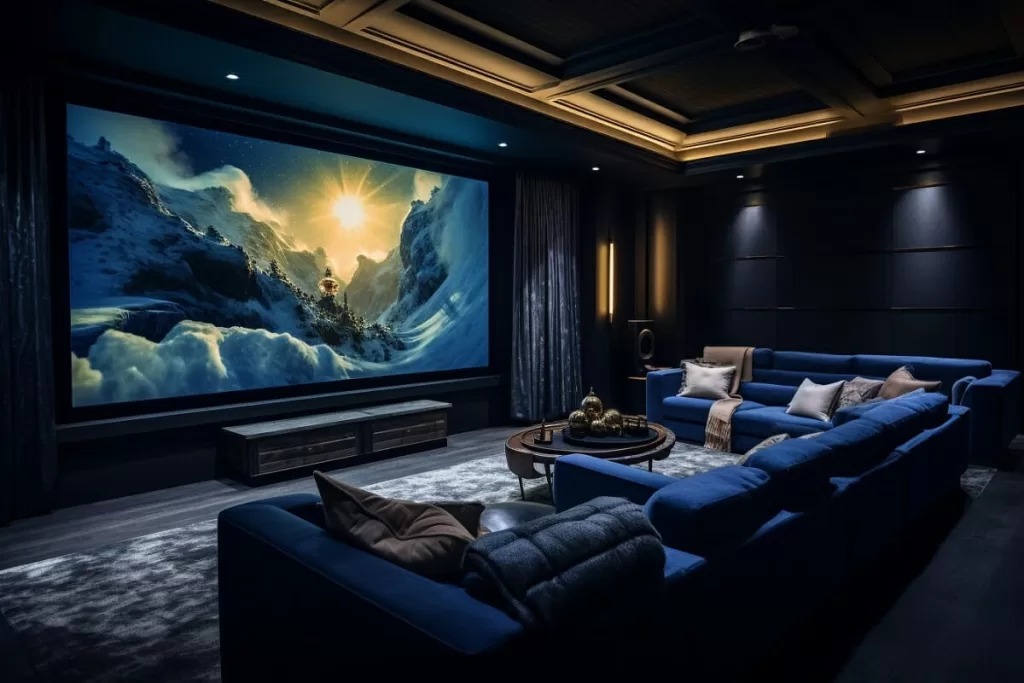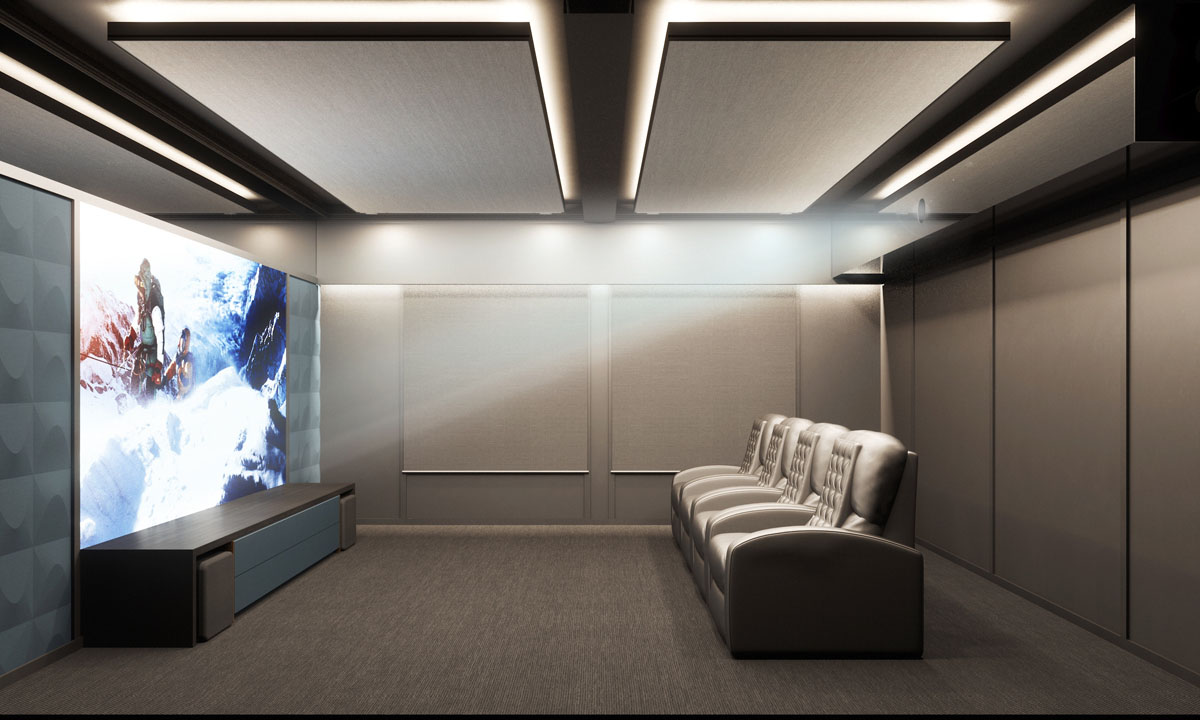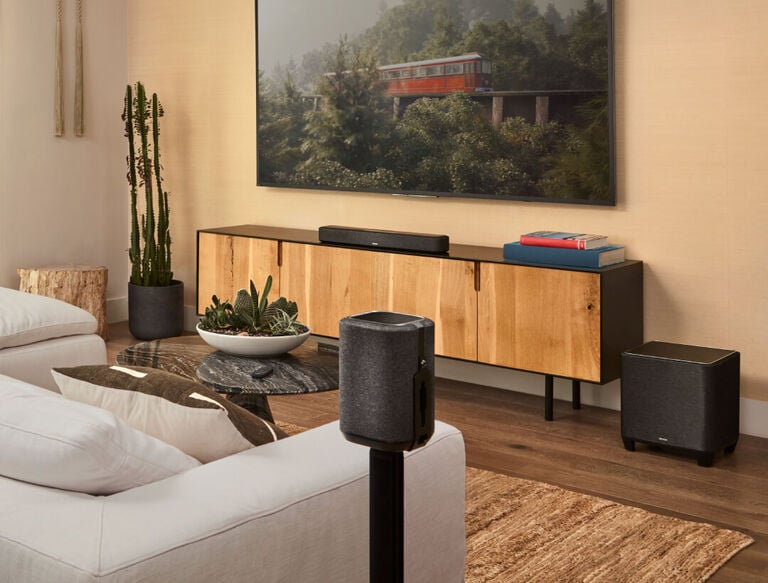Home Theater 101: Whatever You Required to Know for a Cinematic Experience in your home
Developing a home theater that equals the motion picture experience of a commercial theatre includes mindful consideration of multiple components, including screen choice, sound systems, and area layout. Each element plays an essential duty in achieving the desired atmosphere and performance. Whether you are pondering the perfect display size or the ins and outs of border audio, recognizing these principles is essential. As we explore these vital elements, it ends up being obvious that the options made can significantly impact your overall viewing experience, leaving one to ponder how these decisions will shape your individual movie theater.
Choosing the Right Screen
When setting up a home theater, picking the ideal screen can make or damage the checking out experience - tampa home theater installation. The screen serves as the focal point of your configuration, affecting picture top quality, viewing angles, and overall visual. Key variables to think about include display kind, resolution, and size
First, establish the suitable display dimension based on your area dimensions and seating distance. Next off, pick between different display types, such as fixed-frame, motorized, or retractable displays, each offering distinctive advantages.
Resolution is one more important factor. For an absolutely immersive experience, consider a screen made for 4K and even 8K web content, guaranteeing intensity and quality. Additionally, think about the display's gain, which influences illumination and comparison; a greater gain can enhance brightness in well-lit areas, while a lower gain may be preferable for darker atmospheres.
Picking Sound Equipment
Audio tools is a crucial element of any type of home movie theater system, substantially boosting the total watching experience. The option of audio equipment can figure out the deepness, clearness, and immersion of audio, essential for producing a cinematic atmosphere.
When choosing audio equipment, consider a border stereo, which commonly consists of a receiver, numerous audio speakers, and a subwoofer. A 5.1 or 7.1 channel system is recommended, where the initial number stands for the audio speakers and the second the subwoofer, providing an immersive soundscape. The receiver is the heart of the system, handling sound and video clip signals, and must sustain contemporary formats like Dolby Atmos for an enhanced spatial experience.
Quality audio speakers are crucial; search for designs that use a balanced audio account with good bass feedback. Floor-standing audio speakers can generate richer noise, while bookshelf choices conserve space. Additionally, take into consideration cordless options for convenience of setup, although wired systems typically deliver premium performance.

Optimal Seating Plans
Developing an excellent home cinema experience pivots substantially on ideal seating plans. The arrangement of seats plays a crucial function in both comfort and viewing top quality, straight affecting the overall cinematic experience.
First, take into consideration the display size and viewing range. go to this web-site A typical guideline is to place seats at a distance approximately 1.5 to 2.5 times the angled dimension of the screen. This makes certain an immersive experience without stressing the eyes.
Next, altitude is important. The back rows must be higher than the front to avoid blockages if your seats is in a tiered style. For level seats, guarantee that the front row is not as well close to the display, and that every person has a clear line of sight.
Furthermore, think about the setup in terms of social characteristics. Group seats can enhance the public experience, while individual seats might be chosen for individual viewing.

Lastly, prioritize convenience with ergonomic seating that supports extensive viewing durations. Including recliner chairs or supported seats can significantly improve the experience, making the home cinema a preferred location for both entertainment and relaxation.
Lighting and Setting
Effective illumination and setting are essential elements of a properly designed home cinema, as they considerably affect the watching experience. The right illumination can improve the motion picture feeling, while inadequate choices can detract from it. For optimal results, take into consideration a split lighting method that consists of ambient, task, and accent illumination.
Ambient lights gives basic illumination, guaranteeing that the area is not totally dark, which can stress the eyes. Dimmer switches are very suggested, allowing for adjustments based on the material being seen. Job illumination, such as wall surface sconces or flooring lamps, provides practical illumination for activities like reading or navigating the space without disrupting the overall environment.
Accent lights can be utilized to highlight building attributes or produce prime focus, adding deepness and rate of interest to the space. LED strip lights behind screens or along racks can give a refined glow that boosts the aesthetic experience without overwhelming the viewer.

Wiring and Installation Tips
A well-planned wiring arrangement is critical for attaining optimum performance in your home theater system. Correct circuitry not only makes certain premium sound and video clip read this article signals however likewise enhances the overall visual of your area. Begin by mapping out your format, recognizing where each element will be positioned, including your screen, speakers, and receiver.
When picking cords, prioritize high-quality, suitably assessed wiring to lower signal loss. HDMI cords ought to be made use of for video connections, while audio speaker wire need to match the specs of your audio speakers and amplifier. Choose in-wall rated cords to follow safety and security requirements and keep a clean appearance.

Conclusion
In summary, developing an outstanding home cinema experience requires cautious consideration of various elements, including screen option, audio equipment, seating arrangements, illumination, and circuitry. By focusing on these factors, a motion picture environment can be effectively reproduced, enabling for immersive checking out experiences that match standard theater settings.
Producing a home movie theater that equals the motion picture experience of an industrial theater includes cautious consideration of several components, including screen option, sound systems, and area format.When establishing up a home movie theater, choosing the best screen can make or break the watching experience. Next off, select between various screen kinds, such as fixed-frame, mechanized, or retractable screens, each offering distinct benefits. For a genuinely immersive experience, think about a screen developed for 4K or even 8K web content, this article making certain intensity and clarity.In summary, developing a phenomenal home cinema experience needs cautious consideration of various components, consisting of screen option, audio devices, seating arrangements, lighting, and circuitry.